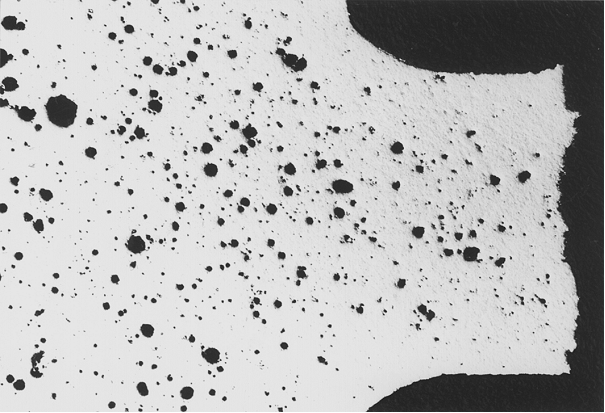Hydrogen porosity
Porosities which can be caused by hydrogen in castings made of nearly all materials. In this process, aqueous melt is reduced in the presence of reactive oxides by hydrogen forming water vapor ( Eq. 1).
Eq. 1:
Therefore, the deoxidation of certain metals and alloys is mandatory prior to casting in order to remove the oxygen bound to the metal oxides thus preventing reactions forming water vapor.
Hydrogen porosity may also occur by the mere release of dissolved hydrogen during the solidification of melts (s. Gas porosity).
Hydrogen is dissolved in the melt atomically; solubility depends on temperature (s. Hydrogen solubility) and features a major solubility step at its solidification temperature (solidus temperature). The molecular hydrogen released in the melt with decreasing temperaturestriggers blistering. The amount and distribution of gas pores depends on the solved gas volume, the cooling conditions and the possibilities for blister nucleation (which in turn depends on the pureness of the melt) as well the escape of gas.
Water solubility is determined under equilibrium conditions by the alloy composition and by the temperature. For example, the alloying elements silicon, copper and zinc decrease solubility while magnesium and sodium increase it. If cooling rates are increased, larger volumes of water are automatically kept soluble; therefore, porosity in sand castings is higher than in castings produced in permanent molds made of metal. The tendency towards these mold reactions increases with increasing casting temperature and with increasing contents of particularly reactive alloy components.
In case of copper casting materials, mold reactions are in particular stimulated by phosphorous contents;therefore, the deoxidation with phosphorous copper must be such that the melt ready for casting has an adequately low residual phosphorous content .
Additional references:
Hydrogen determination
Hot extraction process


